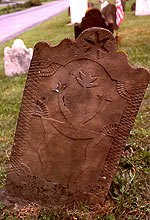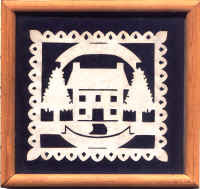
Painting a Winter Landscape Composition
I was very fortunate to have David Armstrong as my watercolor teacher. When he was attending Bucknell University, he taught some graduate courses for the Pennsylvania State University.

David was born in 1947. He lived in Kent, Connecticut on his family’s sheep farm. He studied at the Taft School, Bucknell University and Indiana University.

He spent most of his life in Unityville, PA on his farm. He painted realistic watercolors of everyday life and the beauty of the American landscape. He always painted the mood of the moment on location, not from photographs.

I love watercolor painting and always want to share what I know with my students. I taught this lesson in 1st grade and 5th grade. I introduce the class to the watercolor paintings of David Armstrong. Because Bucknell University is in our hometown, the children relate to it.

We discuss landscape painting, winter, foreground, middleground, background and sky. We also discuss perspective and the horizon line.
We discuss winter and I explain that we are going to paint a winter landscape that demonstrates all of the above and some different watercolor techniques.
Once we all have paint shirts on, tools and materials ready and our names on the back of the paper, we begin.
First technique is masking: We discuss what masking does and then take masking tape and put in the horizon line (one strip across our white drawing or watercolor paper). Then we take three pieces of tape and run them from the top of the paper and down crossing the horizon line. These will be trees. Next we tear pieces of tape to make branches and twigs on our trees.

The second technique we discuss and do is resist. You can use crayons or oil pastels. We used crayons and colored in the moon – the choice is up to each individual student - full, crescent, rising setting, white, yellow, etc.
Our third technique is wet on wet. We are ready to paint the sky. We talk about winter skies and then wet the top part of the paper (the bottom will stay white as it is the snow on the ground) with water and add blues, purples, whatever the students think they want their skies to look like.
Our fourth technique is to take the plastic or wooden end of our paintbrush and scratch some trees right above our horizon line. Because the paper is wet the color goes to those scratches. We are creating distance and adding details to our landscapes.
The final technique is using salt to create an interesting texture on the sky. While the sky is still wet we drop some table salt onto it. Pretzel salt makes a different technique than table salt. We review the five watercolor techniques we used and put our projects on the drying rack until next time.
Second art class: Review and hand back landscapes. We are again decked out in our paint shirts and have deskcovers on the tables. Our first step is to very carefully remove the masking tape from our papers. The horizon line should be the last to be removed. (If anyone tears his or her paper, you can usually tape the back or glue a piece of white to the back where the hole may be.)
We talk about hard lines and soft lines. I show them black charcoal and some pictures of white birch trees. I show them how to use the charcoal and blend it –we used pieces of paper towels and erasers for this part. We discuss the textures we see on the trees. I ask them to turn their trees into birch trees making sure the tree bottoms come down past our horizon lines. This will give us some distance in our landscapes. We discuss these are the trees in the middleground of our landscapes.

When they are finished we discuss the moon and how it might create some shadows from the trees on the snow. We add the shadows on the snow next. We also discuss how to make distance in our landscapes and then we put some objects in our background – again it is up to the individual whether he or she adds more trees, buildings, mountains, hills, people or animals. We also discuss what might be in the foreground – animal, people or vehicle tracks, snowmen, fences, buildings, etc. and then we add them.
We review all of the parts of our landscapes using our vocabulary words. We wash the charcoal off of ourselves and erase any marks on our papers we don’t want there.
Our last part of this project is to create a snowfall on our landscapes. We discuss the sixth and final watercolor technique of spattering. I demonstrate both methods – using a paintbrush and tapping it or using a toothbrush and a piece of cardboard. By running the toothbrush over the edge of the cardboard, it also will create spatters. We use white tempera for this because the white watercolor paint does not show up as well. Remind them that the spatters should go on the landscape not on themselves or their neighbors.
Clean up, collection and closure are last. Below are some finished results.
The first three are from Grade 1 and the last three are from Grade 5.






If you want to learn more about David Armstrong and see some of his other work just click on watercolors.




